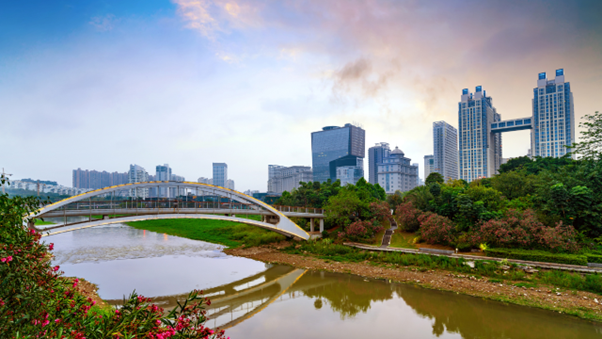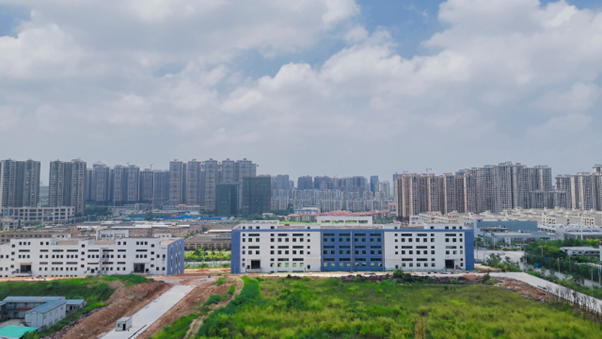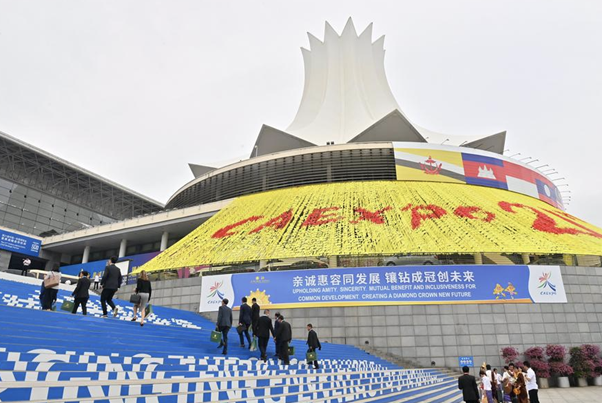Nanning Guangxi: China’s Key Gateway for Strengthening ASEAN Trade and Cooperation

Introduction: Guangxi’s Strategic Role as a Gateway to ASEAN
Nanning, the capital of Guangxi province, is rapidly emerging as a crucial economic hub, driving China’s engagement with ASEAN nations. Positioned strategically in Southern China, Guangxi serves as a gateway connecting China’s inland regions to Southeast Asia. The region is poised to play a central role in deepening economic cooperation between China and ASEAN, a bloc that has been China’s largest trading partner since 2020.
As China seeks to expand its trade and investment footprint in ASEAN countries, Guangxi stands at the forefront of this collaboration. Its strategic initiatives, such as the New International Land-Sea Trade Corridor, are reshaping logistics and trade routes, enhancing connectivity, and fostering mutual prosperity.
The Growing ASEAN-China Economic Partnership
ASEAN and China have built a robust trade and investment relationship over the past two decades. The China-ASEAN Expo (CAEXPO), hosted annually in Nanning, has been instrumental in fostering these ties. This prestigious event has become a symbol of ASEAN-China economic cooperation, attracting businesses from both sides to explore opportunities for collaboration.
Since the first CAEXPO in 2004, trade between China and ASEAN has skyrocketed. Bilateral trade has increased more than 13 times, from approximately USD 78 billion in 2003 to nearly USD 1 trillion in 2022. ASEAN is now China’s largest trading partner, while China has held the position of ASEAN’s top trading partner for over a decade.
In the near future, these ties are set to deepen even further with the new version 3.0 of the China-ASEAN Free Trade Agreement (FTA). This upgraded FTA aims to improve trade facilitation, lower tariffs, and enhance cooperation in digital trade and sustainable development.
Nanning and the New International Land-Sea Trade Corridor
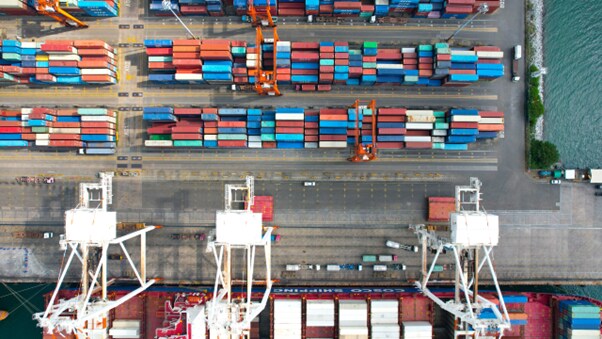
Nanning’s Role in the New Corridor
The New International Land-Sea Trade Corridor (ILSTC) is a groundbreaking initiative designed to improve logistics between China’s western region and Southeast Asia. Nanning, as the heart of Guangxi, plays a pivotal role in this corridor, facilitating trade not only between ASEAN and China but also connecting the region with markets across the globe.
This land-sea corridor links western China to the ports of the Beibu Gulf in the South China Sea, enabling faster and more efficient trade routes. Goods can now be transported from Southeast Asia to China’s inland provinces in less than half the time previously required. As a result, shipping times have been reduced by up to 20 days, and businesses are seeing a 15% reduction in logistics costs.
Economic Impact of the Corridor
The economic impact of the ILSTC is profound, as it supports the seamless movement of goods across borders. In 2023, cargo volumes through the corridor surged by 21%, indicating its increasing importance in regional trade. High-value goods, including electric vehicles, lithium-ion batteries, and photovoltaic products, are now regularly shipped through this corridor.
Guangxi’s trade with ASEAN nations, particularly Vietnam, accounts for two-thirds of its total trade with the region. Nanning’s logistics capabilities have made it a major player in facilitating the transport of agricultural products like Vietnamese aquatic goods, fresh fruits, and other commodities to the broader Chinese market.
As the corridor extends beyond ASEAN to reach over 121 countries and more than 500 ports, Guangxi’s influence on global trade continues to grow. This expansion allows ASEAN businesses to tap into China’s vast consumer market while giving Chinese companies better access to ASEAN economies.
Business Opportunities and Partnerships
Investment and Collaboration in Guangxi
With its pivotal role in the ILSTC, Guangxi has become a magnet for foreign investment and collaboration, particularly with ASEAN countries and Singapore. Several major agreements have been signed recently to promote cooperation between Guangxi and ASEAN-based businesses. These initiatives focus on supply chain integration, infrastructure development, and cross-border logistics.
One example is the partnership between United Overseas Bank (UOB) and Guangxi LiuGong Machinery. This collaboration aims to facilitate supply chain financing, enabling Guangxi-based manufacturers to expand across Southeast Asia. Another key initiative is the China-ASEAN Multimodal Transport Alliance, which brings together logistics players from across the region to enhance trade facilitation through the Nanning International Logistics Park.
Guangxi is also a key player in China’s Belt and Road Initiative (BRI), serving as a gateway for infrastructure investment and development. The region’s role in the BRI enables it to attract investments in modern transportation, energy, and high-tech industries.
Sectoral Focus: Emerging Growth Sectors
Green Economy
One of the most exciting areas of growth in Guangxi’s partnership with ASEAN is the green economy. As both China and ASEAN nations strive toward sustainability, there is a growing focus on renewable energy projects, eco-friendly technologies, and sustainable manufacturing practices. Guangxi is well-positioned to lead in this space, with its emphasis on clean energy initiatives and sustainable development.
Chinese businesses are increasingly investing in green technologies, such as solar power, wind energy, and energy-efficient infrastructure. These investments are crucial not only for achieving environmental goals but also for ensuring long-term economic growth that aligns with global sustainability standards.
Digital Economy
The digital economy is another rapidly expanding sector in Guangxi’s engagement with ASEAN. Investments in e-commerce platforms, fintech solutions, and smart city technologies are reshaping the way businesses operate across borders. Guangxi, with its growing tech infrastructure, is leveraging digital solutions to streamline trade, making it easier for businesses in ASEAN and China to connect and collaborate.
As digitalisation continues to transform industries, both sides are focusing on enhancing cybersecurity, data protection, and digital trade facilitation. These efforts are critical to fostering trust and enabling the digital economy to thrive across the region.
Circular Economy
The circular economy is gaining traction as businesses look for ways to minimise waste and improve resource efficiency. Guangxi is actively working with ASEAN nations to develop circular economy solutions that promote recycling, sustainable manufacturing, and responsible waste management.
This approach not only reduces environmental impact but also creates new business opportunities in waste management, recycling technologies, and eco-friendly product design. The partnership between Guangxi and ASEAN in this area is set to grow as both sides prioritise sustainability and environmental stewardship.
Transport and Logistics
Guangxi’s transport and logistics sector is rapidly evolving, driven by the success of the ILSTC. The region is investing heavily in infrastructure upgrades, including the development of smart ports, railways, and highways. These investments are designed to improve the efficiency of cross-border trade and reduce transportation costs for businesses.
The logistics industry in Guangxi is increasingly focused on adopting technology-driven solutions to optimise supply chain management. By leveraging real-time data and automation, businesses can streamline their operations and enhance the speed and reliability of goods movement.
Guangxi’s Role in the Belt and Road Initiative (BRI)
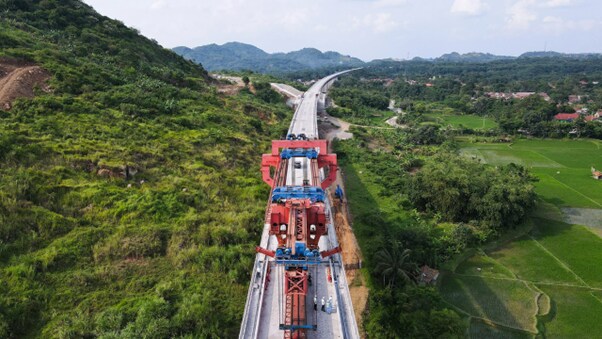
Guangxi’s role in the Belt and Road Initiative (BRI) is central to its vision for future economic growth. The BRI is a global infrastructure development strategy that aims to enhance trade and investment between China and the world, and Guangxi is uniquely positioned as a gateway for these efforts.
President Xi Jinping has outlined a clear vision for the ILSTC as a critical component of the BRI. By strengthening connectivity between China’s western region and Southeast Asia, the corridor will enable further regional integration and economic development. This integration is expected to attract more foreign investment to Guangxi, boosting its infrastructure and improving access to international markets.
The corridor also plays a crucial role in the China-ASEAN Free Trade Area, which facilitates the movement of goods and services between China and ASEAN countries. As a result, businesses in both regions are able to expand their market reach and explore new growth opportunities.
Conclusion: Guangxi’s Vision for Future ASEAN Cooperation
Looking ahead, Guangxi is poised to play an even larger role in fostering economic cooperation between China and ASEAN. Its strategic location, combined with the success of the New International Land-Sea Trade Corridor, makes it a vital player in the region’s economic future.
As trade agreements like the China-ASEAN Free Trade Agreement 3.0 come into effect, Guangxi’s influence on regional trade will only grow. Its commitment to sustainable development, digital innovation, and infrastructure improvements ensures that it will remain at the forefront of China-ASEAN economic cooperation.
In summary, Nanning is fast becoming the gateway through which China and ASEAN build deeper economic ties. With its expanding role in logistics, infrastructure, and emerging growth sectors, it is well-positioned to lead the charge in creating mutual prosperity for businesses and communities across the region.
Nanning Guangxi: China’s Key Gateway for Strengthening ASEAN Trade and Cooperation Read More »


